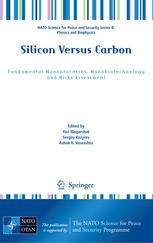

Most ebook files are in PDF format, so you can easily read them using various software such as Foxit Reader or directly on the Google Chrome browser.
Some ebook files are released by publishers in other formats such as .awz, .mobi, .epub, .fb2, etc. You may need to install specific software to read these formats on mobile/PC, such as Calibre.
Please read the tutorial at this link: https://ebookbell.com/faq
We offer FREE conversion to the popular formats you request; however, this may take some time. Therefore, right after payment, please email us, and we will try to provide the service as quickly as possible.
For some exceptional file formats or broken links (if any), please refrain from opening any disputes. Instead, email us first, and we will try to assist within a maximum of 6 hours.
EbookBell Team

4.1
40 reviewsEven though there is no generally accepted definition of nanotechnologies to be defined as distinct discipline there is an emerging consensus that their advent and development is a growing in importance factor of the contemporary and future technological civilization. One of these most fundamental issues we are confronted with is the compatibility with life itself. From single cell organisms to humans, carbon is a key building block of all molecular structures of life. In contrast the man created electronic industry to build on other elements, of which silicon is the most common. Both carbon and silicon create molecular chains, although different in their internal structure. All life is built from carbon-based chains. As long as the man built technological products do not directly interfere with the physiology of life the associated risks from them are relatively easy to identify. They are primarily in the environmental pollution and the possibility of upsetting the natural balance of biocoenosis, on a planetary scale. The basic life functions are still not directly subverted. We can use TV, computers, drive cars and use other technological utilities without fear of direct interference with our cellular functions. This is in particular because all these technological utilities are many orders of magnitude larger than typical scales of biological activity. Most of biological activity, from fermentative catalysis to DNA replication takes place on nanoscale. The situation is radically different when the technological goals are building nanoscale size products. All biological processes take place on nanoscale.